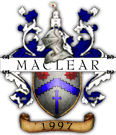The word Celt means the people and the culture. Gaelic is the language type.
The Celtic Peoples
The Celts (pronounced with a hard C like "Claymore") appear in Europe as a group of peoples who spoke languages in the Celtic branch of the Indo-European family of languages. Other branches of the Indo-European family are Albanian, Anatolian, Armenian, Balto-Slavic, Germanic (includes English), Greek, Indo-Iranian, Italic (Latin based) and Tocharian. European languages *not* belonging to the Indo-European group are Basque, Hungarian, Finnish, Estonian and Lappish (also called Saami). Basque is notable in that it is almost certainly a remnant of the languages present in Europe before the Indo-European expansion. Hungarian, however, was brought from the East at a later date. Pictish (now extinct) was also probably non IE, more of this later.
The Celts evolved from the Urnfield Culture (given that name because of the burial system of cremation and placement of ashes in urns which in turn were buried in fields) much earlier than the Romanized Celtic world of the late 500-400 BC.
I use the word "evolve" because it is difficult to define just when the Celts became a culture unto themselves. That said, a culture can be defined according to economic stability, shared religious beliefs and social structure.
Around 1500-1000BC, the Celts lived in an area which today is mostly in Eastern France. The area stretched from roughly where Luxembourg is today to a bit further south than Geneva and took in parts of modern day West Germany and Switzerland. It was an area a little bigger than the island of Ireland.
 The Celts then expanded to cover an area covering most of Western Europe and
Central Europe. Around 400BC, the Celts lived in what is now the UK, France (i.e. Gaul), Belgium, Switzerland,
Austria, and the Czech and Slovak Republics. Celts also lived in parts of Spain, northern Italy, The Netherlands,
the southern half of Germany, and parts of Poland and Russia (source: "The Story of English", Faber and Faber; BBC
books 1992).
The Celts then expanded to cover an area covering most of Western Europe and
Central Europe. Around 400BC, the Celts lived in what is now the UK, France (i.e. Gaul), Belgium, Switzerland,
Austria, and the Czech and Slovak Republics. Celts also lived in parts of Spain, northern Italy, The Netherlands,
the southern half of Germany, and parts of Poland and Russia (source: "The Story of English", Faber and Faber; BBC
books 1992).
After the height of their power, the Celts (the first Indo-European group to spread across Europe) were pushed north and west by successive waves of Indo-European peoples, notably Germanic and Latin based. The main migration was by the Galli or Gauls into France, northern Italy and the north of Europe.
It is only relatively recently that archaeologists have begun to refer to the Celts as a civlization at all and only more recently that they have vaulted to the status of "Great Civilization." Previously, only the Romans and Greeks were believed to reach that status during the Bronze Age, but in recent findings it appears that the Celts, too, had equal power, culture and influence. It doesn't hurt to sac and ransom the greatest city in history as well-- Rome.
Keep in mind as you look at the map above, that borders are a remarkably tricky line. We are attempting to show where the culture reached, not some singular, organized society. You might say "Hey, Celts had more land than the Romans !" That would be improper, of course, because the Celts were not a singular society, nor were they organized. Also, we can pretty much be assured that their influence never covered all that area at any given point in time. We are talking about an intangible force spanning a thousand years or more.

